After 79 days on foot and bicycle, the Road to Rome group has officially reached Rome: the group of walkers, the EAVF delegation, and alongside, the Italian National Tourist Board-ENIT.


After 79 days on foot and bicycle, the Road to Rome group has officially reached Rome: the group of walkers, the EAVF delegation, and alongside, the Italian National Tourist Board-ENIT.
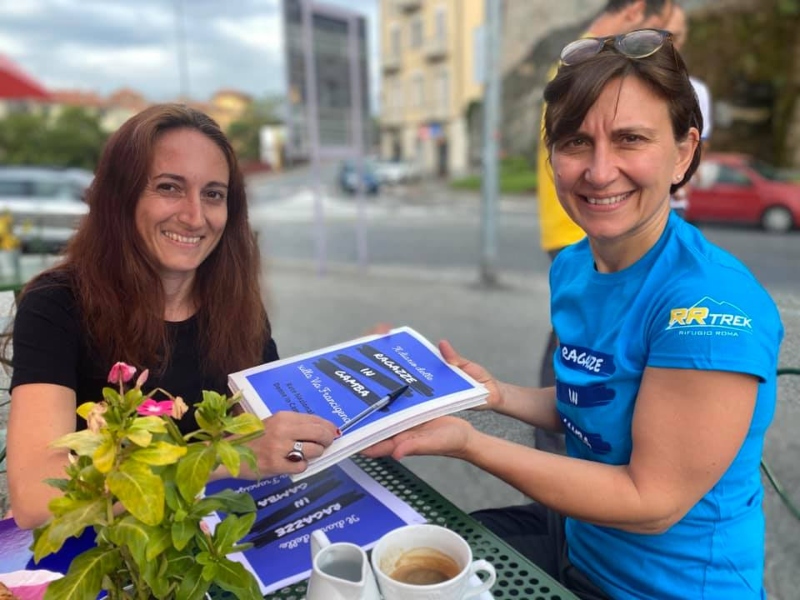
From the 3rd of August to the 19th of October it is possible to participate to the first “Literary pilgrim relay” along the Via Francigena, organized by the Rete Nazionale Donne in Cammino group as an integration to #RoadtoRome2021.
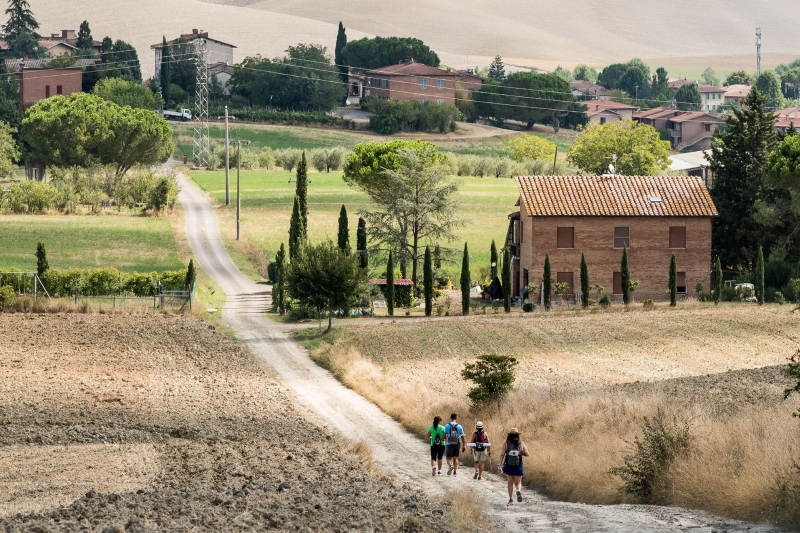
While the Road to Rome group continues its trip across Italy, the last 14th of August another important relay march started from the Great Saint Bernard towards Rome, which will be reached on the 12th of September in 45 stages.
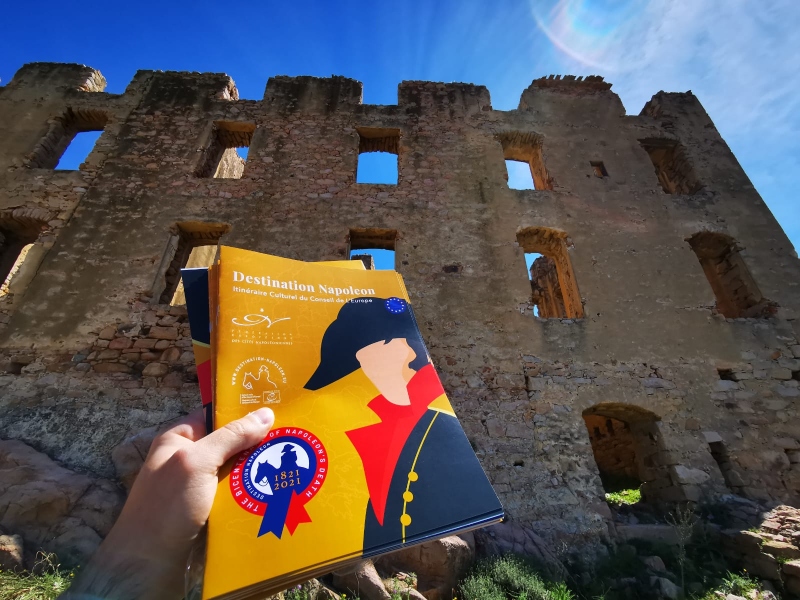
On Thursday the 5th of August, two important occurrences converged on the Via Francigena stage, to celebrate, on foot, the bicentenary of the death of Napoleon and the 20th anniversary of the Association.

Important news is coming for those who are planning their next trip along the Via Francigena or other walking routes. Our website evolved in a new version, easier to navigate and increasingly complete of information.
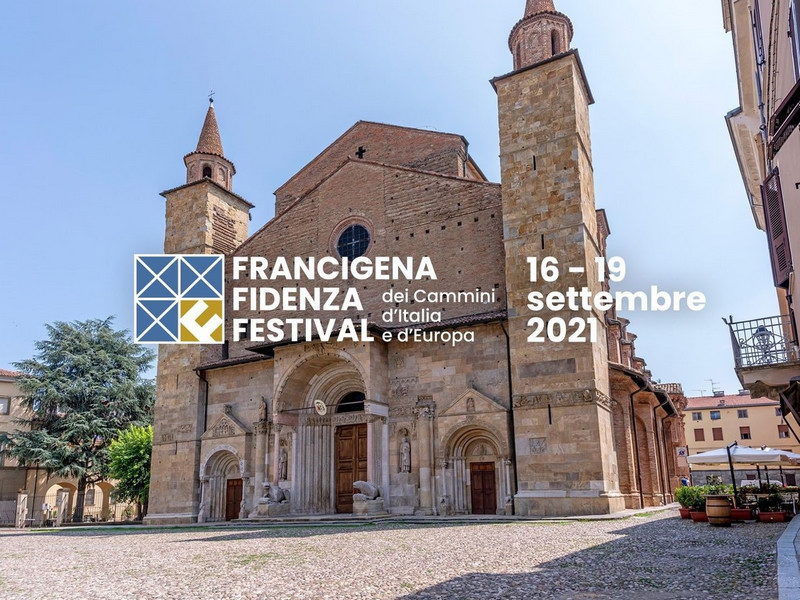
From the 16th to the 19th of September 2021, in Fidenza (Parma), the first edition of the Francigena Fidenza Festival will take place: an international event dedicated to the Via Francigena and to all walking routes in Italy and in Europe.
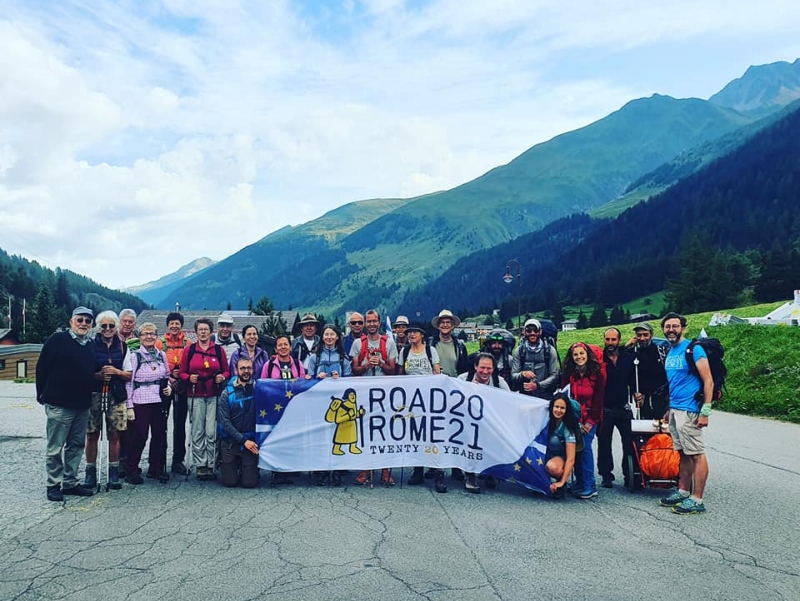
The “Via Francigena – Road to Rome. Start again!” relay march, organized by the European Association of Via Francigena Ways with the support of ENIT, on August 1st reaches an important checkpoint.
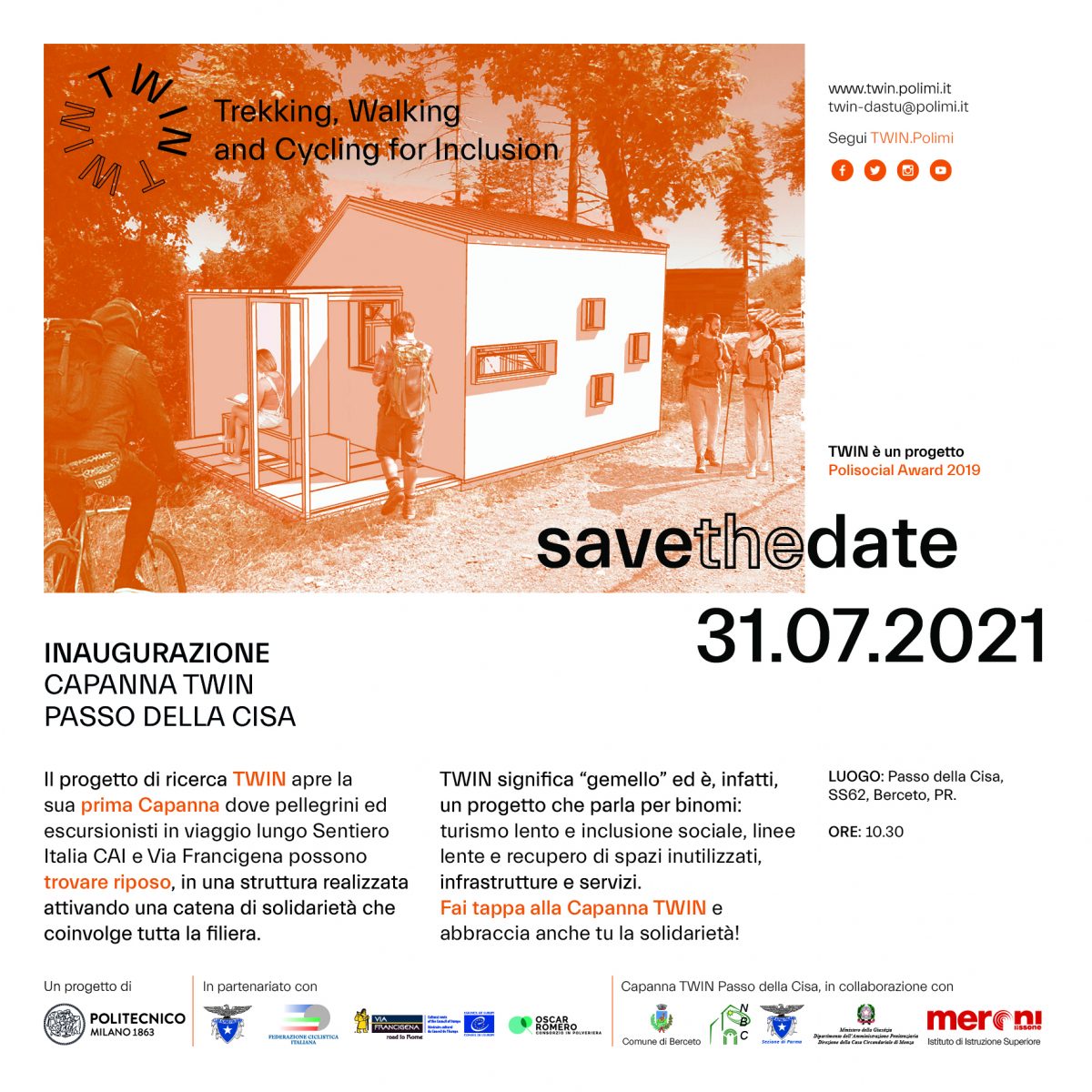
On the 31st of July, on the historical Cisa pass in the municipality of Berceto, the first TWIN Cabin will be inaugurated. The accommodation structure will open to ‘slow’ tourists, traveling by foot or by bike along the Sentiero Italia CAI and the Via Francigena.

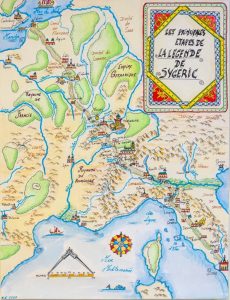
Written by Sabine Rostaing, in collaboration with her husband Nicolas and her son Matthias, who is a playwright, “The legend of Sigeric: the true story of the Via Francigena” puts together historical events and the stages of Sigeric’s Journey, the archbishop of Canterbury who set the basis (without knowing it!) of our Via Francigena.
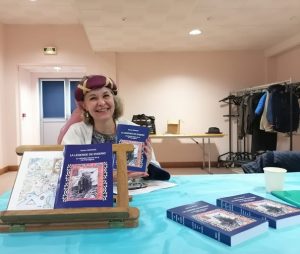
The book, created in the style of a conte théâtrale, traces the story of this man in a semi-serious and engaging manner.
Lightly written, it leads us into the beauty of a trip across time. The text is supported by a glossary, helping us to interpret the language.
Through the official website, you can access more information and other contents for free, as well as podcasts and some extracts of the book’s text.
Extracts from the book: https://sygericfrancigena.com/extraits/
The official website: https://sygericfrancigena.com/
The podcasts:
You can contact Sabine Rostaing to get a copy of the book: https://sygericfrancigena.com/contact
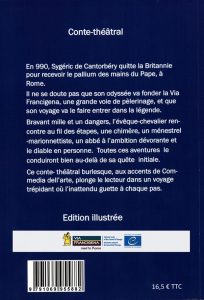
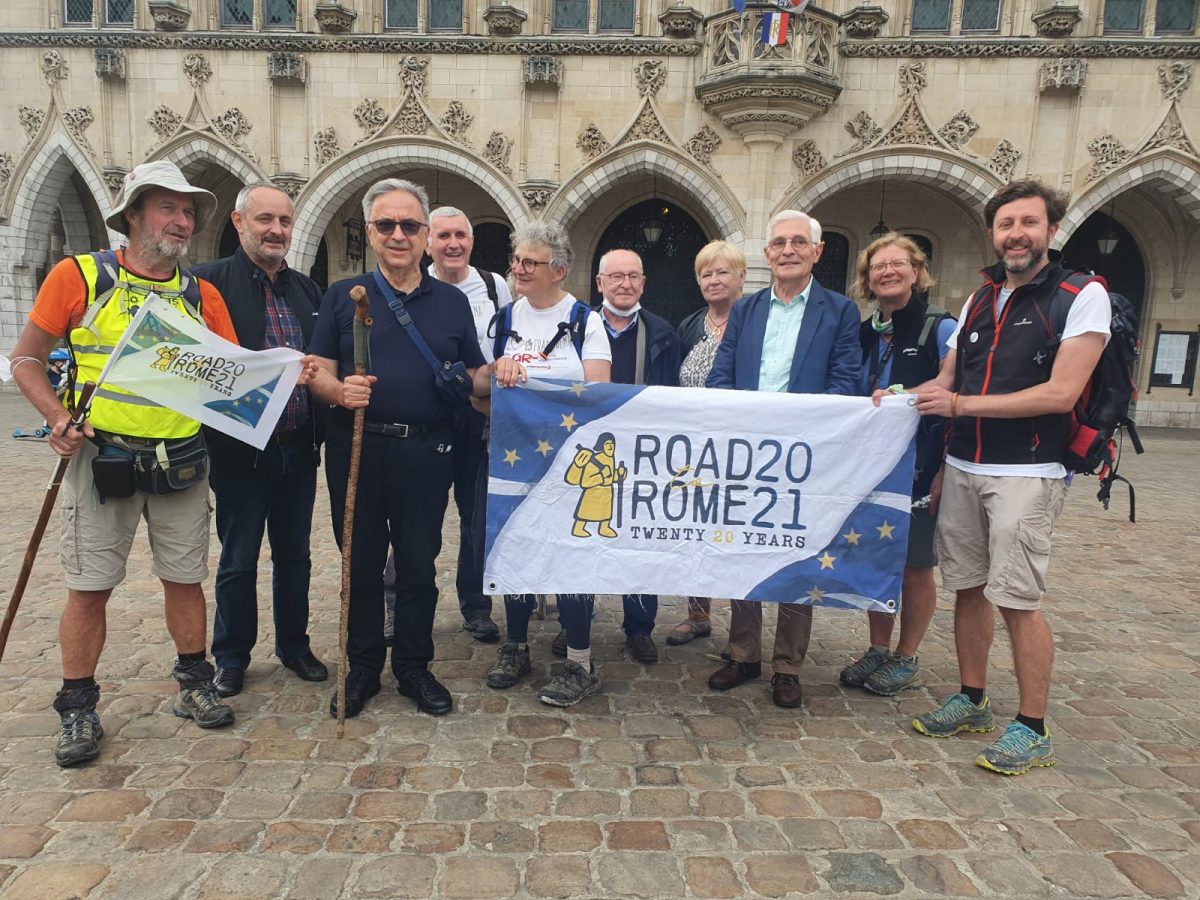
The beautiful cathedral of Canterbury and the Beffroi of Arras are two symbolic locations that framed the beginning of “Via Francigena Road to Rome”, the long march that started on the 15th of June and will end on the 18th of October in Santa Maria di Leuca. The rather rainy weather of these first days of journey did not influence the warm welcoming of municipalities, departments, tourist offices, local associations and the network of accommodation facilities involved in the project. From the 15th of June, the pilgrim’s stick, delivered by our friends of the Confraternity of Pilgrims to Rome, is crossing Europe from North to South on its 127 days-long relay march.
The rather rainy weather of these first days of journey did not influence the warm welcoming of municipalities, departments, tourist offices, local associations and the network of accommodation facilities involved in the project. From the 15th of June, the pilgrim’s stick, delivered by our friends of the Confraternity of Pilgrims to Rome, is crossing Europe from North to South on its 127 days-long relay march.
Canterbury, Calais, Wissant, Guines, Licques, Tournehem-sur-la-Hem, Wisques, Thérouanne, Amettes, Bruay-La-Buissière, Ablain Saint Nazaire, Arras were the stages crossed in these first walking days. In between, many small municipalities of the English region of Kent and the French Haute France opened their doors to the Road to Rome, displaying the extraordinary cultural heritage that distinguishes them.
“Heritage” (together with “restart” and “Europe”) is one of the key words of this epic journey, which aims to celebrate the 20th anniversary of the European Association of Via Francigena ways with all of the 657 municipalities located along the route. The Road to Rome is also highlighting the UNESCO candidacy of the Via Francigena in France: this project is finding support and excitement among all encountered local communities.
Along the route, groups of hikers and pilgrims are joining our walkers, wanting to share their trip with the leading group of the Road to Rome. This is one of the most important results achieved until now: the strong participation of local territories, responding with pride and feeling part of a European cultural route and a pilgrimage route that culturally unites them.
At the forefront we also find the Fédération Française de la Randonnée and the Fédération Via Francigena France, which are accompanying the group along the French section and are highly contributing to the overall success of the Road to Rome.
Sunday 27th of June the group stopped for a day in the gorgeous city of Arras. The next stops are expected in Reims, Champlitte and Besançon, before arriving in Swiss territory.
It is possible to follow our daily stories, photos and videos of the trip through EAVF’s official channels.
WEBSITE: www.viefrancigene.org (with a map showing our daily movements).
FACEBOOK: https://www.facebook.com/ViaFrancigenaEU
INSTAGRAM: https://www.instagram.com/viafrancigena_eu/
YOUTUBE: youtube.com/c/ViaFrancigenaEU
LINKEDIN https://www.linkedin.com/company/via-francigena-eu
TWITTER: https://twitter.com/ViaFrancigenaEU